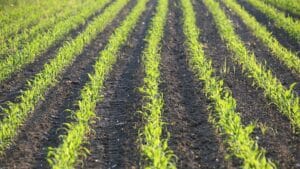In 2014, the seed industry was stunned by the news of theft of corn germplasm from production fields in Iowa and Illinois, by Chinese nationals trying to transport the seeds back to China. In 2018, the industry was shocked a second time by the theft of rice germplasm from a private research facility in Kansas, with those responsible having similar plans to send seed back to China.
The seed industry is continuously working to develop new innovations, but these innovations come at a cost, both in time and money. For many crops, it can be a 7- to 10-year period to develop and commercialize a new variety, costing upwards of $1 million per year. For new seed technologies, it can cost upwards of $100 million to $150 million to bring a new seed technology to market. While this investment in innovation may seem daunting, it is necessary for our future crop production.
Unfortunately, seed piracy, like the thefts that took place in Iowa and Kansas, can have a huge impact on the ability to invest in new innovations. It is estimated that the theft of corn germplasm in Iowa cost researchers five to eight years of research and in the range of $30 million to $40 million, while the rice germplasm theft was estimated to have cost the owners $3 to $18 million in research investment. These are significant amounts of time and money. It is obvious that organizations are looking at ways to get their hands on new innovations.
The seed industry is a small, tight-knit group and has a strong tradition of watching out for each other. Only by working together can we prevent seed piracy and ensure that we can continue to have the innovations to meet our future needs.
So how can you can help? If you see or suspect seed piracy contact the SIPA Tip Line.

Calls to the SIPA Tip Line are anonymous and confidential. Since 2015, the SIPA Tip Line has received a steady increase in tips on potential seed piracy issues ranging from soybeans, leafy greens, pulses and carrots to potential infringement of seed coating technologies. All reports are reviewed and tips are passed along to the appropriate organization.
Yet, seed piracy is not limited to just foreign nationals. Seed piracy also includes unauthorized saving of seed and brown bagging, which also have a serious impact on the industry and our ability to produce new innovations.
SIPA estimates that approximately 5% of soybean production in the United States is saved or brown bagged seed and costs the industry approximately $1.72 billion annually in lost profits. When you consider that approximately 20% of soybean seed revenue is invested back into research, that is an estimated $340 million that could be used for new innovations (based on 2015 U.S. Department of Agriculture statistics).
For wheat, the story is even harsher. An estimated $451 million to $677 million in seed costs are lost in the U.S. to saved seed or brown bagging (please note that some of this saved seed may be legal under U.S. law). It is estimated that 10% of seed costs are reinvested back into new wheat innovations, meaning that an estimated $45 million to $68 million is lost every year that could have been put into research for new innovations.
From 2000 to 2008, the United States farm cash receipts from the sale of vegetables and pulses (including potatoes) averaged $17.4 billion. If you estimate that seed value represents on average 6% of total cost of production and if you estimate that between 2% and 4% of seed value is lost to piracy, approximately $20.8 million to $41.8 million is potentially lost annually that could be used for research and development.
These days, commodity prices are low, making farm profitability difficult. Farmers are constantly looking to find ways to save on costs; however, seed piracy is a choice that, in the end, hurts all of the industry. And you can help! If you see or suspect seed piracy, contact the SIPA Tip Line at 1-844-SEED TIP.
Together we can ensure that the needs of future generations are met through our innovations!












